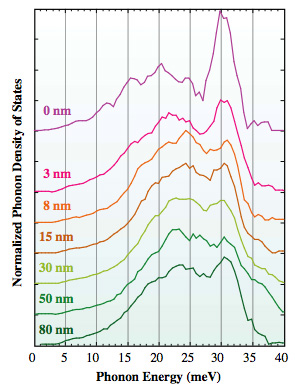Phonon density of states in fcc-Fe precipitates in Cu
Inquiry number
SOL-0000001179
Beamline
BL09XU (HAXPES I)
Scientific keywords
| A. Sample category | inorganic material |
|---|---|
| B. Sample category (detail) | metal, alloy, crystal |
| C. Technique | inelastic scattering, nuclear excitation, Mössbauer effect |
| D. Technique (detail) | X-ray Raman spectroscopy, nuclear excitation, nuclear resonance |
| E. Particular condition | interface, time-resolved (ns) |
| F. Photon energy | X-ray (4-40 keV) |
| G. Target information | local structure, dislocation, strain, phonon |
Industrial keywords
| level 1---Application area | mechanics, industrial material, others |
|---|---|
| level 2---Target | catalysis |
| level 3---Target (detail) | magnetic layer |
| level 4---Obtainable information | density, interatomic distance |
| level 5---Technique | scattering |
Classification
A80.20 metal ・material, A80.30 inorganic material
Body text
Nuclear resonant inelastic scattering is a unique technique to study element-specific phonon density of states. Using this technique, one can measure the element-specific vibrational states of the condensed matter, the amorphous and the liquid containing Mössbauer nuclei. The figure shows the phonon density of states of various sizes of fcc-Fe precipitates in Cu measured at room temperature. These data indicate that the influence of the Cu host extends to about 30 nm.
Fig. Experimental phonon density of states (DOS) for various sizes of fcc-Fe precipitates in Cu measured at room temperature. Data for 0 nm indicate those for the isolated Fe impurities in Cu.
Source of the figure
Bulletin from SPring-8
Bulletin title
Reaearch Frontiers 2001B/2002A
Page
43
Technique
Source of the figure
No figure
Required time for experimental setup
hour(s)
Instruments
References
| Document name |
|---|
| Phys. Rev. B66 (2002) 214304 |
Related experimental techniques
Questionnaire
The measurement was possible only in SPring-8. Impossible or very difficult in other facilities.
This solution is an application of a main instrument of the beamline.
Similar experiments account for more than 30% of the beamline's subject.
Ease of measurement
Middle
Ease of analysis
With a great skill
How many shifts were needed for taking whole data in the figure?
Four-nine shifts

